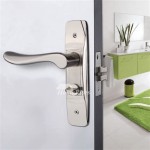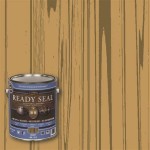How To Repair Car Interior Door Trim Molding Kit
The interior door trim molding kit of a vehicle plays a vital role in both aesthetics and function. Serving as a protective layer against impacts, scratches, and general wear and tear, it simultaneously contributes to the vehicle's overall interior design. Over time, this molding is susceptible to damage from various sources, including sun exposure, accidental bumps, or simply the aging process. When damage occurs, it degrades the appearance of the vehicle's interior and potentially compromises the protective function of the molding. While professional repair or replacement is an option, many forms of damage can be addressed through a meticulous repair process, which can save considerable expense.
This article provides a comprehensive guide to repairing common types of damage to car interior door trim molding kits. It covers assessing the damage, preparing the work area, selecting the appropriate repair materials, executing the repair, and refinishing the repaired section to match the existing interior. The aim is to equip vehicle owners with the knowledge and skills necessary to restore their interior door trim molding to its original condition, or as close to it as possible.
Assessing the Damage and Identifying Appropriate Repair Techniques
Before commencing any repair work, a thorough assessment of the damage is crucial. This involves a close inspection of the molding to identify the extent and nature of the damage. Common types of damage include scratches, dents, cracks, fading, and loose or detached sections. The type of damage directly influences the required repair technique and the necessary materials.
Scratches, for instance, can range from superficial surface marks to deeper gouges that penetrate the molding's finish and material. Superficial scratches may be addressed with specialized scratch removers and polishing compounds. Deeper scratches require filling with a suitable repair compound followed by sanding and refinishing.
Dents often result from impacts and can range from minor indentations to significant distortions of the molding's shape. Minor dents may be amenable to heat application to restore the original shape. More significant dents may necessitate filling, sanding, and potentially reshaping the molding.
Cracks represent a more severe form of damage, often indicating structural weakening. Cracks require careful cleaning and stabilization using a suitable adhesive or filler. Depending on the size and location of the crack, reinforcement may be necessary to prevent further propagation.
Fading is primarily caused by prolonged exposure to sunlight, resulting in a loss of color and vibrancy. Refinishing is typically required, involving cleaning, priming and applying color-matching paint or dye to restore the original appearance.
Loose or detached sections necessitate identifying the cause of the detachment. In many cases, the adhesive holding the molding in place has deteriorated. Removing any residual adhesive, cleaning the surfaces, and applying fresh adhesive are typically sufficient to reattach the molding.
During the assessment, it's important to identify the material composition of the molding. Common materials include plastic, vinyl, wood, and metal. Different materials require different repair techniques and materials. For example, a plastic molding requires repair compounds specifically designed for plastic, while a wooden molding may benefit from wood fillers and woodworking techniques.
Preparing the Work Area and Gathering Necessary Materials
Proper preparation is essential for a successful repair. The work area should be clean, well-lit, and adequately ventilated. Covering the surrounding areas with drop cloths or plastic sheeting prevents accidental damage from spills or debris. Removing the door trim molding, if feasible, simplifies the repair process and provides better access to the damaged area. If complete removal is not possible, masking off the surrounding areas with painter's tape is necessary to protect them from accidental damage, adhesive overspill, or sanding marks.
The specific materials required depend on the type and extent of the damage, as identified during the assessment phase. Generic materials often include:
*Cleaning agents:
Mild soap and water are suitable for general cleaning. Alcohol-based cleaners can remove grease and contaminants. Specialized plastic or vinyl cleaners may be needed for specific materials. *Adhesives:
A variety of adhesives are available, including epoxy resins, cyanoacrylate (super glue), and specialized trim adhesives. The choice of adhesive depends on the material of the molding and the type of repair. *Fillers:
Automotive body filler or plastic repair compound is used to fill dents, cracks, and deep scratches. Wood filler is appropriate for wooden moldings. *Sanding supplies:
Assorted grades of sandpaper (e.g., 120 grit, 220 grit, 400 grit, 600 grit) are necessary for smoothing filled areas and feathering edges. Sanding blocks or orbital sanders may improve efficiency. *Primers:
Primers provide a suitable base for paint and improve adhesion. Specialized primers are available for plastic, metal, and wood. *Paints or dyes:
Color-matched paints or dyes are essential for restoring the original appearance of the molding. Automotive-specific paints are preferred for durability and color accuracy. *Clear coat:
A clear coat protects the paint and provides a glossy or matte finish. *Polishing compounds:
Polishing compounds remove swirl marks and imperfections from the paint surface, enhancing the overall appearance. *Applicators:
Brushes, spray guns, putty knives, and sanding blocks are necessary for applying adhesives, fillers, paints, and polishing compounds. *Safety equipment:
Safety glasses, gloves, and a respirator are essential to protect against chemical exposure and dust inhalation.Selecting high-quality materials ensures a durable and professional-looking repair. It is generally advisable to consult with an automotive paint supplier or parts specialist to ensure the chosen materials are compatible with the molding material and the existing finish.
Executing the Repair and Refinishing the Molding
Once the damage has been assessed and the necessary materials gathered, the repair process can commence. The specific steps vary depending on the type of damage, but the following sequence represents a general approach:
Cleaning:
Thoroughly clean the damaged area and the surrounding surfaces with a suitable cleaning agent. Remove any dirt, grease, wax, or contaminants that could interfere with adhesion or paint application. Allow the area to dry completely before proceeding.Filling (if necessary):
If the damage involves dents, cracks, or deep scratches, apply a filler to restore the original shape and surface consistency. Follow the manufacturer's instructions for mixing and applying the filler. Apply the filler in thin layers, allowing each layer to dry completely before applying the next. Overfilling slightly is preferable, as the excess can be sanded away later.Sanding:
Once the filler has fully cured, sand the filled area smooth and flush with the surrounding surface. Start with a coarser grit sandpaper (e.g., 120 grit) to remove the bulk of the excess filler, then gradually progress to finer grits (e.g., 220 grit, 400 grit) to refine the surface and remove scratches. Use a sanding block to ensure a flat and even surface. Feather the edges of the filled area to blend seamlessly with the surrounding molding.Priming:
Apply a primer to the sanded area. Priming promotes adhesion of the paint and provides a uniform base for color application. Apply the primer in thin, even coats, following the manufacturer's instructions. Allow the primer to dry completely before proceeding.Painting or Dyeing:
Apply the color-matched paint or dye to the primed area. Apply the paint or dye in thin, even coats, using a spray gun or brush, depending on the type of paint and the desired finish. Allow each coat to dry completely before applying the next. Multiple thin coats are preferable to a single thick coat, as they reduce the risk of runs and drips.Clear Coating (optional):
If desired, apply a clear coat to protect the paint and enhance the finish. Apply the clear coat in thin, even coats, following the manufacturer's instructions. Allow the clear coat to dry completely before proceeding.Polishing (optional):
Once the paint or clear coat has fully cured, polish the surface with a polishing compound to remove swirl marks and imperfections. Use a polishing pad and a rotary or orbital polisher for best results. Follow the manufacturer's instructions for using the polishing compound and the polisher.Reassembly:
Once the repair is complete and the finish is fully cured, carefully reattach the door trim molding to the vehicle. Ensure the molding is securely fastened and properly aligned. Use new adhesive or clips if necessary.Throughout the repair process, it is essential to adhere to the manufacturer's instructions for each material. Proper surface preparation, careful application, and adequate drying times are crucial for achieving a durable and professional-looking repair. Patience and attention to detail are key to success.

How To Fix Scratched Interior Panels In Your Car Holts Auto Site

Fabric Falling Off A Door Trim Panel Repair

19pcs Trim Removal Pry Tool Molding Kit Panel Door Dash Interior Clip Set Al An

Panel Removal Tool 13 Pcs Auto Trim Upholstery Kit Door Kinglake

Tips To Re Your Car S Interior Diy Family Handyman
How To Remove Scratches From A Car S Interior Ifixit Repair Guide

Weather Stripping On Cars Repair Maintenance Guide

Dropship 13 Pcs Car Trim Removal Tool Auto Door Panel Clip Dash Plastic Interior Radio Open Pry Kit To At A Lower Doba

Abbasali Premium Auto Trim Removal Tool Kit 5 Piece Pry Bar Set Fastener Remover Repair Tools Molding Interior Door Dash Panel Buy Best In

How To Repair Interior Plastic Trim And Exterior Back Black
Related Posts








